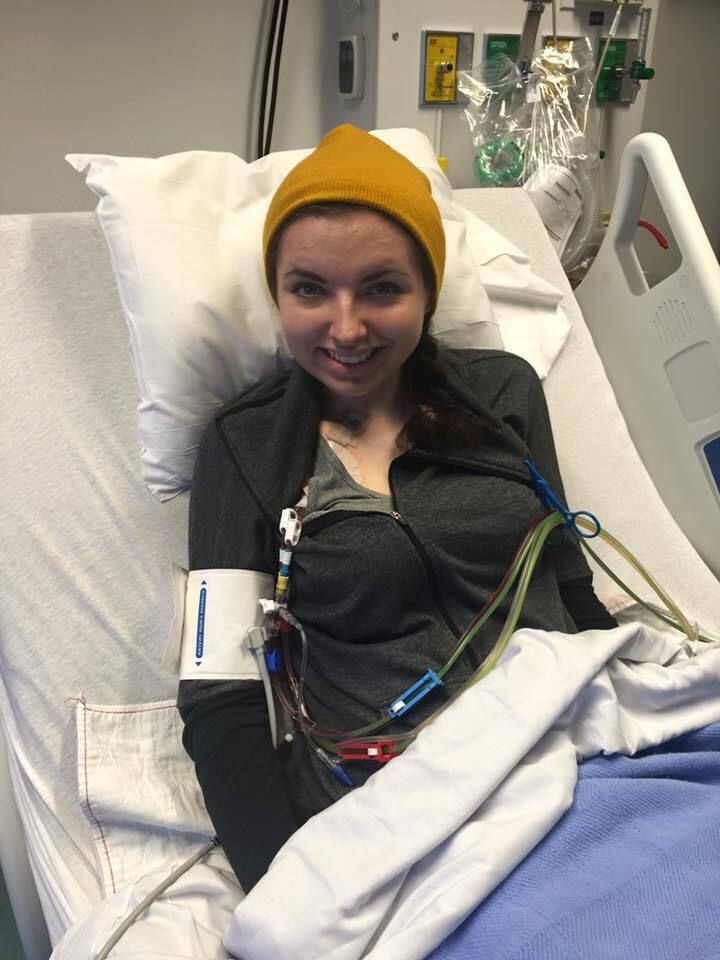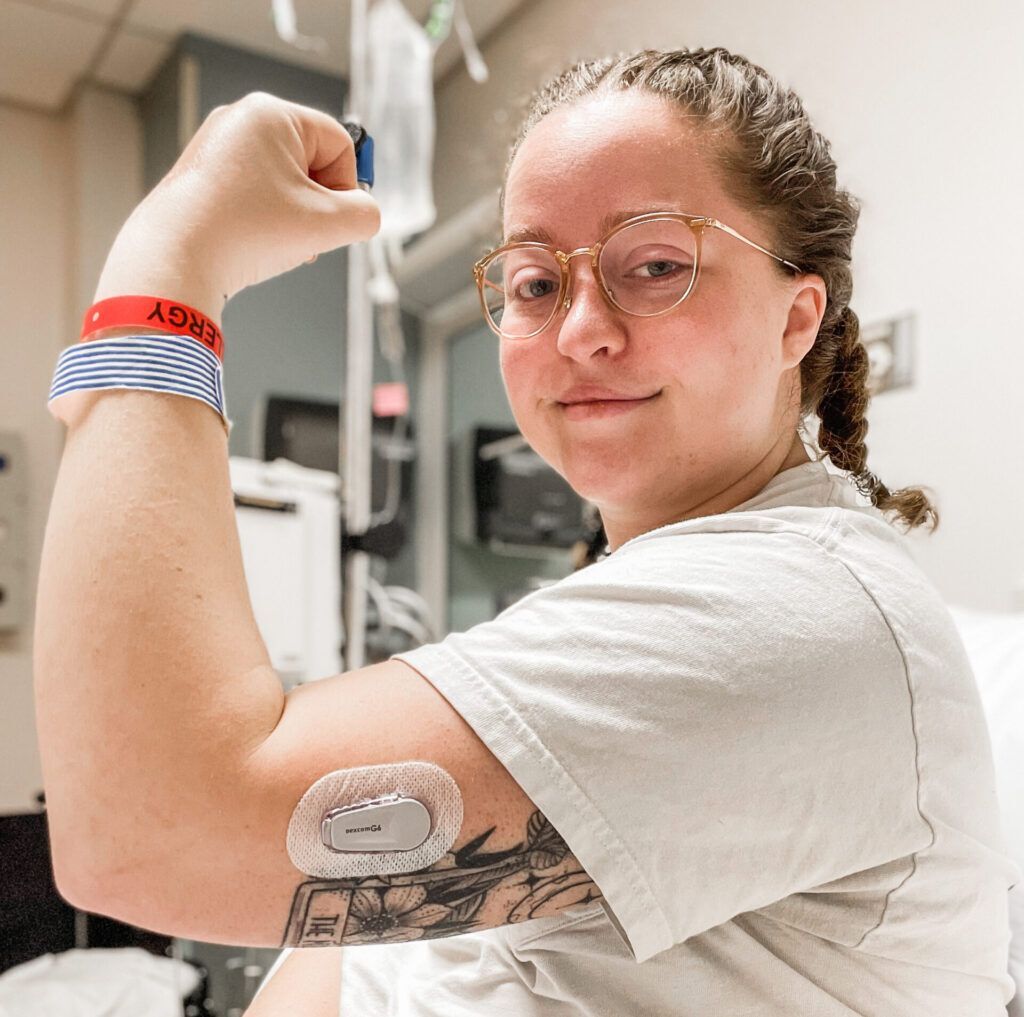Three things stand out immediately about Lea’s story. First, she has scoured the world to find a diagnosis and treatment. Second, her extensive personal videos of SPS spasms capture authentic moments of acute pain. Finally, and most profoundly for The SPSRF, Lea found life-changing resources on the foundation’s website, www.stiffperson.org, which is precisely our hope.
Angela’s life began tragically. For years she suppressed emotional and physical pain. But after she was diagnosed with SPS, Angela became the most prolific writer about it on themighty.com, an excellent source for health stories. In fact, she put SPS on the map. It’s how The SPSRF found her and learned that the restorative love of her husband set free a powerful voice.
Michael Weiss is a 19-year-old sophomore at the University of Michigan who was diagnosed with SPS at age 12 after a seven-month long hospitalization. The son of two physicians, Michael taught the medical community around him about SPS, and he continues to teach all of us about pushing through pain.
Joey calls himself a “medical unicorn,” a fantastically sarcastic way of saying he is extremely difficult to diagnose and treat, especially since he tested negative for the GAD antibody, one of the hallmarks of SPS. He also claims to be a terrible fundraiser (even though he works with a very successful fundraising arm of the Smithsonian). But when he became The SPSRF’s first official Facebook and Instagram fundraiser, something magical happened.
Now two years old, Isla was diagnosed with SPS at 18 months old, the youngest patient The SPSRF has ever encountered. Her great-aunt, Mary Latza, has long been an ultra-athlete, but Isla’s diagnosis has given her feats of strength and endurance new purpose. This year, Latza will compete in Ultraman Races to raise awareness of SPS and fund for research. Her long-term goal is to change the world for Isla. #Ultra4Isla
“Focus on what you can do” says 34-year-old Alexandra Stamatopoulou, a Greek swimmer with SPS who won the bronze medal in the Women’s 50m backstroke at the Tokyo Paralympics. Painful and physically taxing, competitive swimming gives her therapeutic and psychological benefits. “I compete, not because I want to make myself suffer, but because as long as I’m succeeding, then I convince myself that I feel better. I can’t say that anything stands in my way.”
One year ago, SPS hit Darrell Cherry out of the blue and changed everything for him – and his wife, Erica – dramatically. For more than 30 years the Cherrys shared a life full of adventure, hiking, and long-distance running. Now Darrell relies on a walker for mobility, and on Erica and their children for emotional stability. While Darrell describes SPS as “serious and no fun,” one of his long-time coping mechanisms has been humor, which can be found in his funny, plain-spoken blog, “The Stiff Man.”
She calls herself “a bullhorn in stilettos.” A former model who was diagnosed with SPS in 2011, Tisha Foster recently published her memoir, “My Journey with God Through Stiff Persons Syndrome.” In her VOICES OF SPS video, she reveals who has been the guardian angel of her life.
The Today Show (online) featured Janie’s story last year, primetime coverage of a rare disease. Janie was always a hard-charger with a big career and kids to raise on her own. The perplexing symptoms came in her mid-50’s: she couldn’t walk down stairs well, her legs felt heavy in the pool, she developed Type I diabetes, she dropped to 85 pounds. SPS changed her life dramatically, but Janie tells The SPSRF, she’s a lucky lady.
She had been a physician for 21 years and never heard of Stiff Person Syndrome, until she was diagnosed with it.
Dr. Kelly Morgan faced that diagnosis with denial. She had been active and healthy her entire life, and couldn’t accept what was happening to her body. But as far as SPS patients go, she was lucky. Because she was a doctor, she knew what to say, what to ask for, and whom to turn to. She was diagnosed in less than two years, which is warp speed for SPS patients.
The SPSRF features Kelly in April, a time when spring forces us to look at life in a new way. This was true for Kelly too, who had to reframe her entire view of a disease, not as the physician but as the patient.
If there is anyone who knows how to navigate a rare disease, it’s Meg Bayer. I recently had the pleasure of connecting with Meg, an amazing young woman diagnosed with SPS at 16 years old. Yes, kids get this disabling disease too. Despite a catastrophic seizure landing her in a coma for 10 days, Meg has continued not only to train in Tae Kwon Do, but also compete. All from her wheelchair! We share the same condition, and I’m sharing her story here because it is an inspiration.
Without SPS awareness in the medical community in Kenya, a lack of access to reliable insurance, and her own reluctance early on to undergo multiple tests, Joy Lwangu’s SPS went undiagnosed for almost 15 years. As a result, she lost her voice and her ability to walk. Now she’s fighting the clock to fundraise for a treatment that she hopes will change her life.
Joy writes, “It is simply a disease that remains invisible to the world around you for years and finally gets diagnosed when your degeneration is too drastic to be ignored. If the same standard was applied to many other diseases? Diabetes, high blood pressure? How many people would be dropping dead daily? Death rates should not be what gets research funding and leads to better training in medical school. Quality of EVERY LIFE on earth is key.”
The lowest point came on Christmas Eve when the pain from SPS was so great, Shane James wished he weren’t on this earth. The thought of his two children, asleep upstairs, expecting Santa and all his magic, snapped Shane out of it. What was left of that “fight or flight” moment was an inner desire to run. Even with his debilitating condition, Shane has run marathons, and ultramarathons. A documentary about his feats on foot says it all: Run To Live.
In 2020, Shane found Dr. Tara Zier and The Stiff Person Syndrome Research Foundation on Facebook. He was floored: he never imagined his condition would have worldwide recognition. It gave him hope, and even more energy to take on the run of his life, Traversing Tassie, to shine a light on SPS.
Imagine spending six years struggling to understand the muscle spasms and chronic pain taking over your body.
Despite countless visits to doctors, many of whom accused her of feigning her severe, days-long spasms, Jacqui Atkinson fought for answers. She held onto her hope and faith until she found one: Stiff Person Syndrome.
Writing from her bed, she chronicled her difficult journey in a memoir, One In A Million, to raise awareness of the condition. Jacqui is generously donating 50% of book sales to The SPSRF. She is an inspiration.
My SPS Story
Every journey is different, every experience unique. The diagnosis of a rare disease — and being one-in-a-million — can feel isolating. Share your story by completing this form. Your willingness to share your narrative creates a connection that will build the community so we can all support each other as we endeavor for better treatments and a cure for SPS.
My name is Rachel Hallstrom, and I'm a college student in Anchorage, Alaska. At eighteen, I was a picture of health, training for a triathlon and thriving on a Paleo diet. But everything changed when I began to experience alarming symptoms. It took seven months, countless misdiagnoses, and a trip to the Mayo Clinic before I finally learned I had Stiff Person Syndrome (SPS).
Hello, my name is Ann Thompson. I want to tell my story, not for sympathy but to remind other SPS patients that you are not alone. To remind you that you must advocate for yourself, seek answers, and not give up until you receive the care you deserve.
My name is David Axelrod. I reside in Milford, Connecticut, and work as a Senior Talent Acquisition Specialist. But to truly know me, you need to understand my journey - a journey defined by resilience and the will to overcome Stiff Person Syndrome.
Stiff Person Syndrome patient, Steven S, shares the story of his experience and how his life has changed.







